Measurement of Neutrino Oscillation Parameters from Muon Neutrino Disappearance with an Off-axis Beam
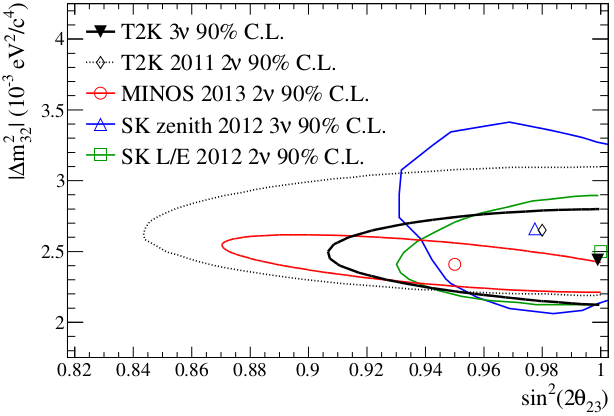
The T2K collaboration reports a precision measurement of muon neutrino disappearance with an off-axis neutrino beam with a peak energy of 0.6 GeV. Near detector measurements are used to constrain the neutrino flux and cross section parameters. The Super-Kamiokande far detector, which is 295 km downstream of the neutrino production target, collected data corresponding to 3.01 × 1020 protons on target. In the absence of neutrino oscillations, 205 ± 17 (syst.) events are expected to be detected and only 58 muon neutrino event candidates are observed. A fit to the neutrino rate and energy spectrum assuming three neutrino flavors, normal mass hierarchy and θ23≤ π/4 yields a best-fit mixing angle sin2(2θ23)=1.000 and mass splitting |Δ m232| =2.44 × 10-3 eV2/c4. If θ23≥ π/4 is assumed, the best-fit mixing angle changes to sin2(2θ23)=0.999 and the mass splitting remains unchanged.
Evidence of Electron Neutrino Appearance in a Muon Neutrino Beam
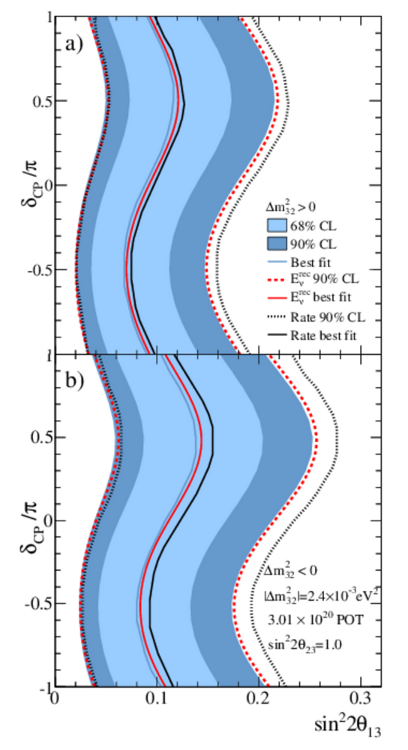
The T2K collaboration reports evidence for electron neutrino appearance at the atmospheric mass splitting, |Δm322|=2.4×10-3 eV2. An excess of electron neutrino interactions over background is observed from a muon neutrino beam with a peak energy of 0.6 GeV at the Super-Kamiokande (SK) detector 295 km from the beam’s origin. Signal and background predictions are constrained by data from near detectors located 280 m from the neutrino production target. We observe 11 electron neutrino candidate events at the SK detector when a background of 3.3±0.4(syst.) events is expected. The background-only hypothesis is rejected with a p-value of 0.0009 (3.1σ), and a fit assuming νμ→νe oscillations with sin2(2θ23)=1, δCP=0 and |Δm322|=2.4×10-3 eV2 yields sin2(2θ13)=0.088+0.049-0.039(stat.+syst.).
Measurement of the Inclusive NuMu Charged Current Cross Section on Carbon in the Near Detector of the T2K Experiment

T2K has performed the first measurement of νμ inclusive charged current interactions on carbon at neutrino energies of ~1 GeV where the measurement is reported as a flux-averaged double differential cross section in muon momentum and angle. The flux is predicted by the beam Monte Carlo and external data, including the results from the NA61/SHINE experiment. The data used for this measurement were taken in 2010 and 2011, with a total of 10.8 × 1019 protons-on-target. The analysis is performed on 4485 inclusive charged current interaction candidates selected in the most upstream fine-grained scintillator detector of the near detector.
The flux-averaged total cross section is <σCC>φ =(6.91 +/- 0.13 (stat) +/- 0.84 (syst)) ×10-39 cm2/nucleon for a mean neutrino energy of 0.85 GeV.
The T2K ND280 Off-Axis Pi-Zero Detector
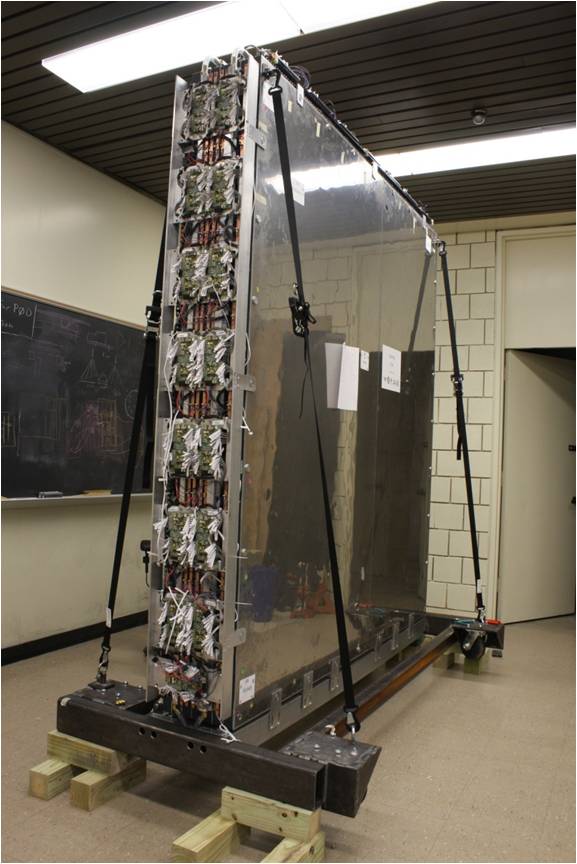
The Pi-Zero detector (PØD) is one of the subdetectors that makes up the off-axis near detector for the Tokai-to-Kamioka (T2K) long baseline neutrino experiment. The primary goal for the PØD is to measure the relevant cross sections for neutrino interactions that generate pi-zero’s, especially the cross section for neutral current pi-zero interactions, which are one of the dominant sources of background to the electron neutrino appearance signal in T2K. The PØD is composed of layers of plastic scintillator alternating with water bags and brass sheets or lead sheets and is one of the first detectors to use Multi-Pixel Photon Counters (MPPCs) on a large scale.
Optical transition radiation monitor for the T2K experiment
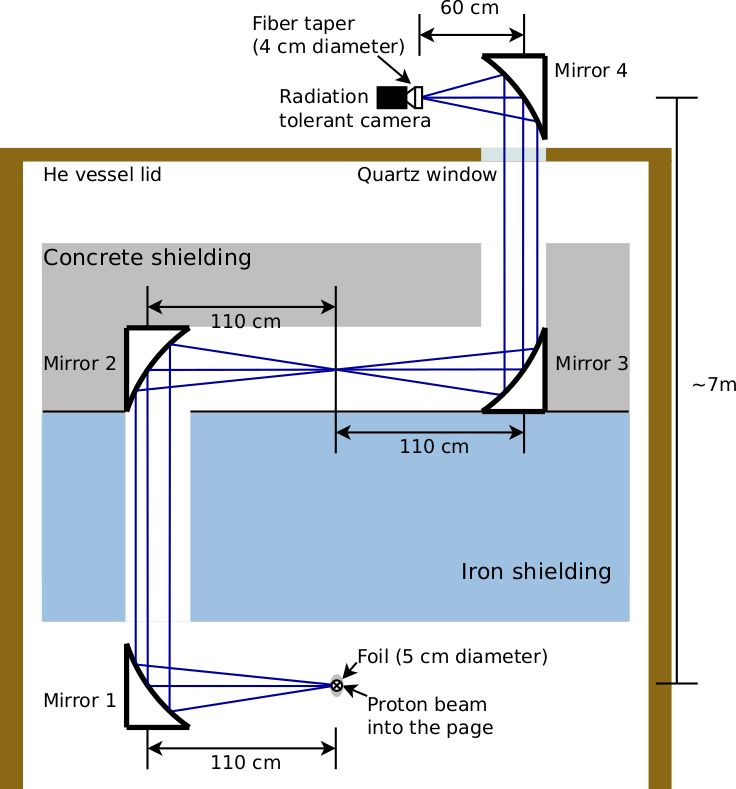
An optical transition radiation monitor has been developed for the proton beam-line of the T2K long base-line neutrino oscillation experiment. The monitor operates in the highly radioactive environment in proximity to the T2K target. It uses optical transition radiation, the light emitted from a thin metallic foil when the charged beam passes through it, to form a two-dimensional image of the 30 GeV proton beam profile in the transverse plane. One of its key features is an optical system capable of transporting the light over a large distance out of the harsh environment near the target to a lower radiation area where it is possible to operate a camera to capture this light. The monitor measures the proton beam position and width with an accuracy better than 0.5 mm, meeting the physics requirements of the T2K experiment.
The T2K Side Muon Range Detector (SMRD)
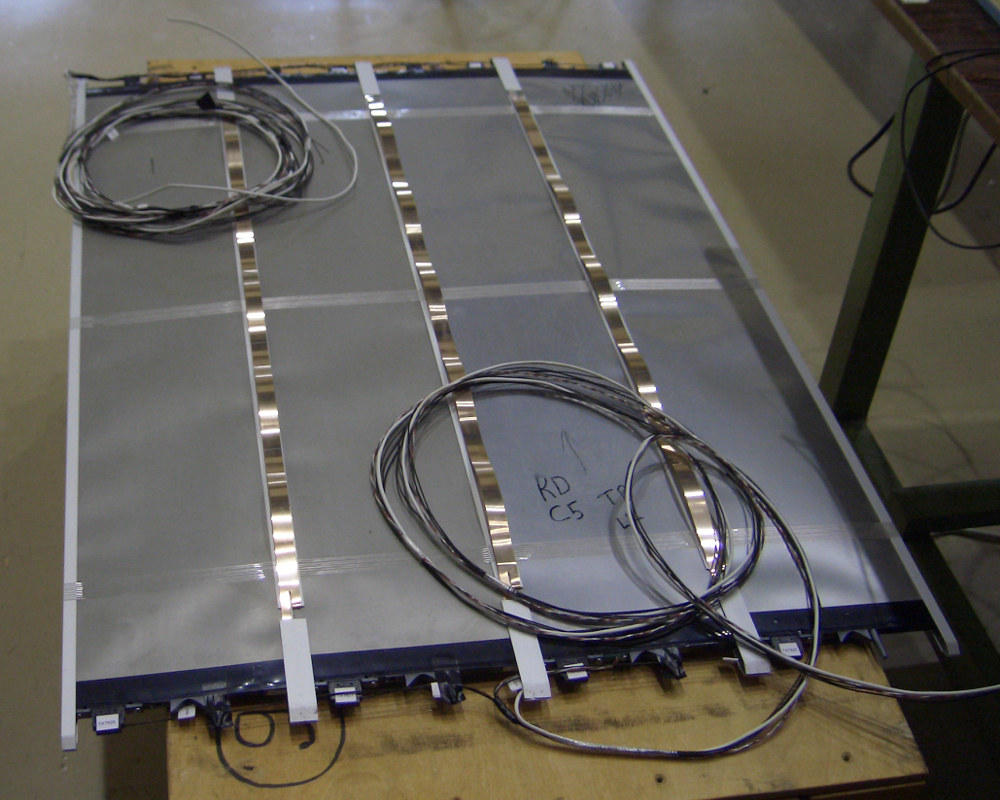
The near detectors include a magnetized off-axis detector (ND280) which measures the unoscillated neutrino flux and neutrino cross-sections. The present paper describes the outermost component of ND280 which is a Side Muon Range Detector (SMRD) composed of scintillation counters with embedded wavelength shifting fibers and Multi-Pixel Photon Counter readout. The components, performance and response of the SMRD are presented.
The T2K Neutrino Flux Prediction
The flux prediction is an essential part of the successful prediction of neutrino interaction rates at the T2K detectors and is an important input to T2K neutrino oscillation and cross section measurements. A FLUKA and GEANT3 based simulation models the physical processes involved in the neutrino production, from the interaction of primary beam protons in the T2K target, to the decay of hadrons and muons that produce neutrinos. The simulation uses proton beam monitor measurements as inputs. The modeling of hadronic interactions is re-weighted using thin target hadron production data, including recent charged pion and kaon measurements from the NA61/SHINE experiment. For the first T2K analyses the uncertainties on the flux prediction are evaluated to be below 15% near the flux peak. The uncertainty on the ratio of the flux predictions at the far and near detectors is less than 2% near the flux peak.
The T2K Fine-Grained Detectors
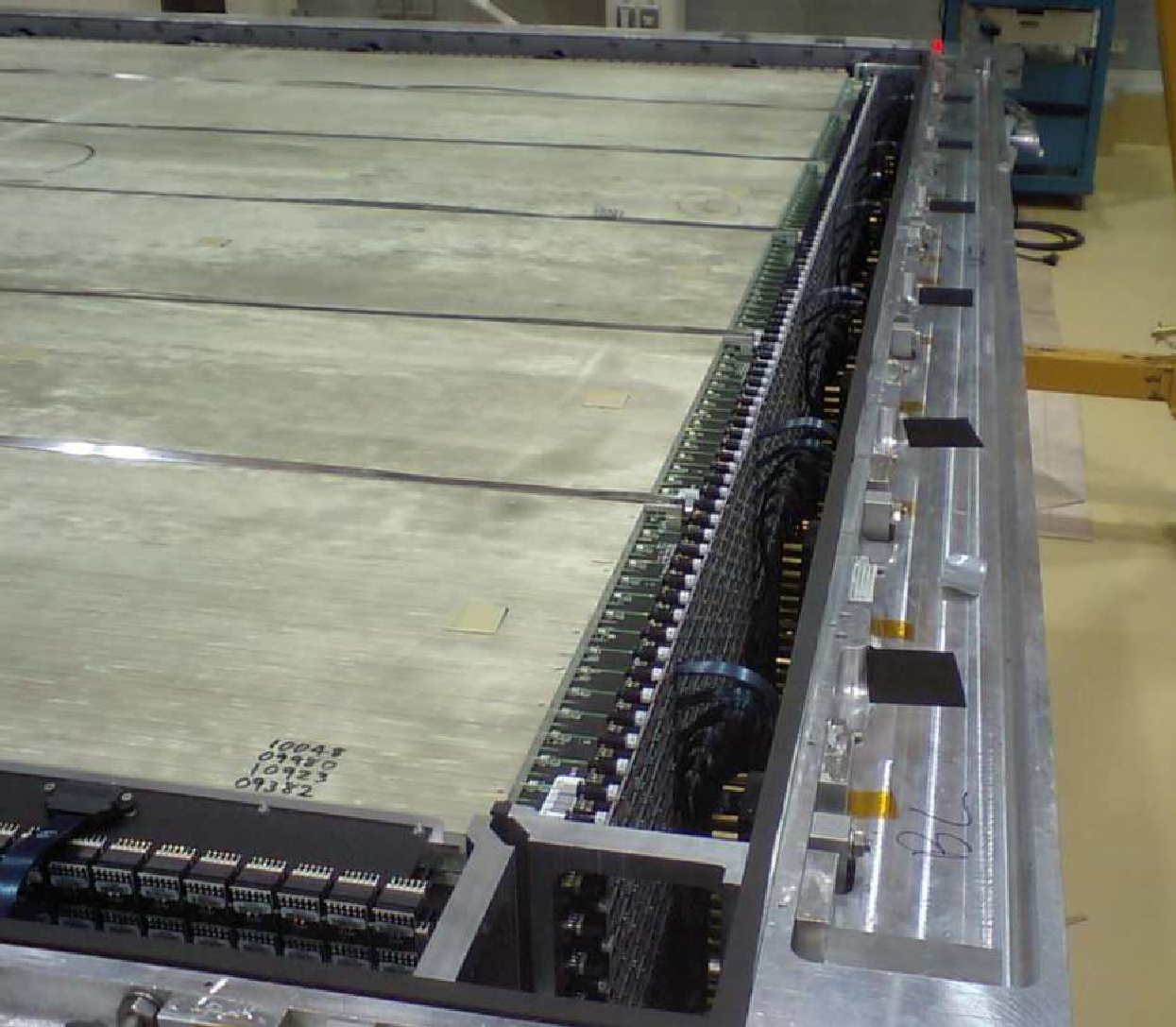
This paper describes the design and construction of two massive fine-grained detectors (FGDs) that serve as active targets in the ND280 tracker. One FGD is composed solely of scintillator bars while the other is partly scintillator and partly water. Each element of the FGDs is described, including the wavelength shifting fiber and Multi-Pixel Photon Counter used to collect the light signals, the readout electronics, and the calibration system. Initial tests and in situ results of the FGDs’ performance are also presented.
Measurements of the T2K neutrino beam properties using the INGRID on-axis near detector
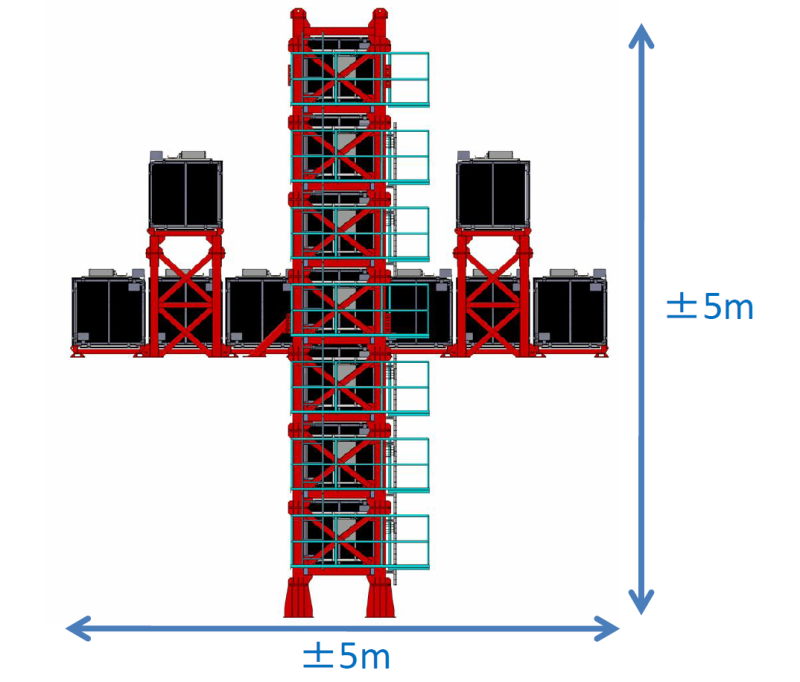
Precise measurement of neutrino beam direction and intensity was achieved based on a new concept with modularized neutrino detectors. INGRID (Interactive Neutrino GRID) is an on-axis near detector for the T2K long baseline neutrino oscillation experiment. INGRID directly monitors the muon neutrino beam profile center and intensity using the number of observed neutrino events in each module. The neutrino beam direction is measured with accuracy better than 0.4 mrad from the measured profile center. The normalized event rate is measured with 4% precision.
First Muon-Neutrino Disappearance Study with an Off-Axis Beam
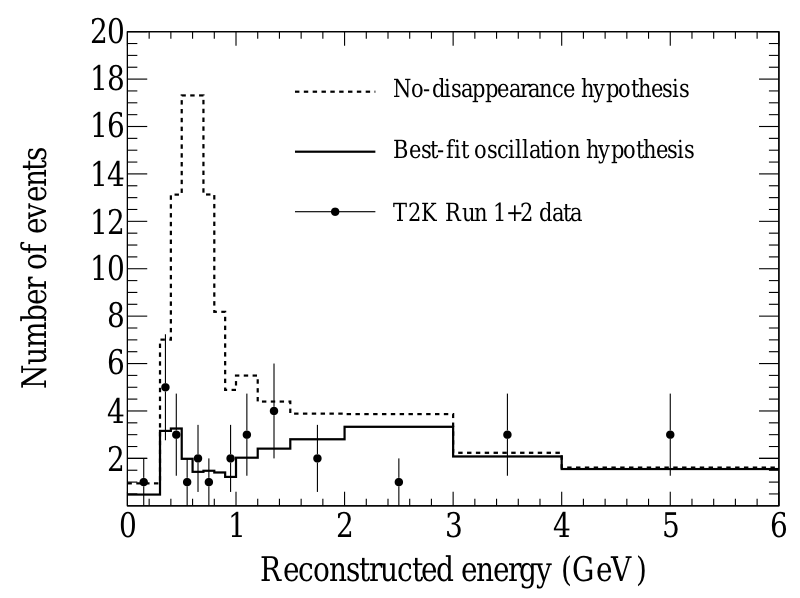
With data corresponding to 1.43×1020 protons on target, we observe 31 fully-contained single muon-like ring events in Super-Kamiokande, compared with an expectation of 104±14 (syst) events without neutrino oscillations. The best-fit point for two-flavor nu_mu -> nu_tau oscillations is sin2(2 θ23) = 0.98 and |Δm232| = 2.65×10-3 eV2. The boundary of the 90 % confidence region includes the points (sin2(2 θ23),|Δm232|) = (1.0, 3.1 10-3 eV2), (0.84, 2.65×10-3 eV2) and (1.0, 2.2×10-3 eV2).



